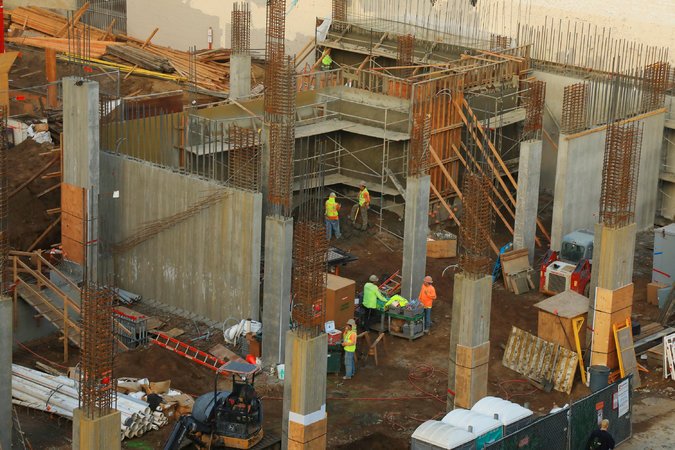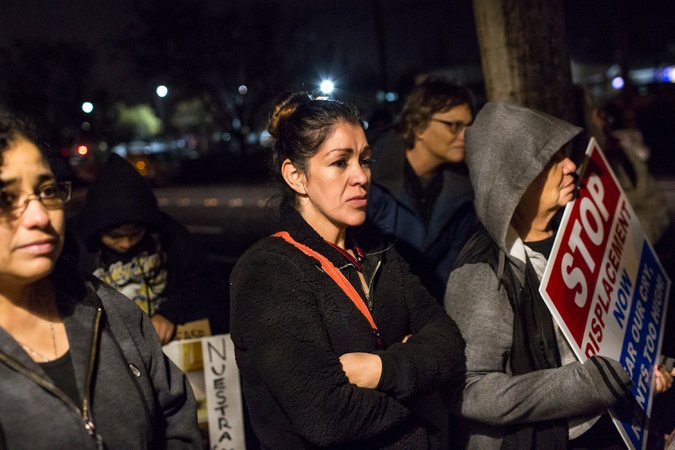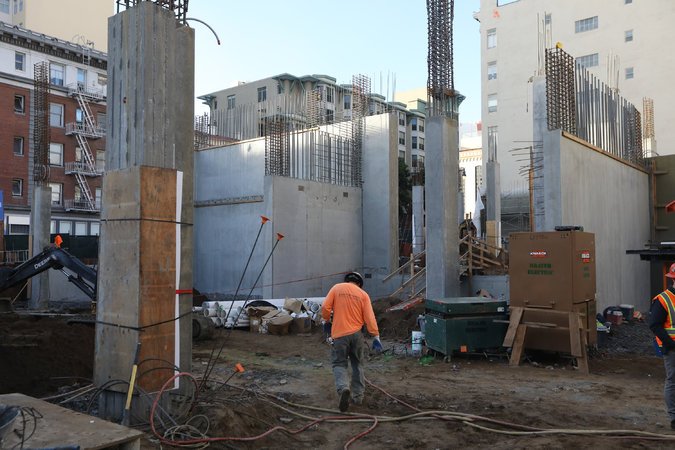Don Falk can see the fallout from his window. Mr. Falk is the chief executive of the Tenderloin Neighborhood Development Corporation, an affordable-housing developer in San Francisco’s impoverished Tenderloin district. Directly across the street from his office sits a new project, a rising eight-story building that will have 113 units, a third of those set aside to serve the city’s swelling homeless population.

A year ago, as the market for tax credits started falling in expectation that a Republican president and a Republican Congress would steeply lower taxes, the project developed a $3 million deficit. The city stepped in to cover the shortfall, but the financing problem was an early indication of what affordable-housing groups and developers expect to be a declining pace of new building.
Kate Hartley, director of the San Francisco Mayor’s Office of Housing and Community Development — the agency that backstopped Mr. Falk’s development when it needed help — said the lower corporate tax rate had increased the cost of building affordable housing in the city by roughly $50,000 per unit. That adds up to a lot of multimillion-dollar leaks, she said, “and we have less money to build the units we want to build.”
For renters like Sandy Hernandez, who lives south of San Francisco in a two-bedroom apartment with her ex-husband and two children, this is coming at the worst possible time. Her building was recently purchased by a group of investors, and next month her $1,900 rent is scheduled to go up $850 — more than 40 percent — to $2,750. Ms. Hernandez said there is no way she can pay that much, but she’s stuck because the list for affordable housing is so long.
“It’s hard because there’s a lot of people in the same situation,” she said.
Programs to build subsidized rental housing date back to the Great Depression, and were greatly expanded during President Lyndon B. Johnson’s “war on poverty.” Support for these programs started to wane under President Richard Nixon, and they were vastly scaled back under President Ronald Reagan.
But unlike public housing programs, which tended to expand under Democratic administrations and shrink under Republican ones, tax credits proved enduring and politically popular.
Conservatives saw the approach as a tax break and a way to use private markets to solve public problems. Liberals saw it as a way to direct federal money to local communities. Since 1987, it has funded construction and rehabilitation of about 30 percent of the nation’s 10 million affordable units, which are defined as units that people making 60 percent or less of a city’s median income could afford.
Advertisement
Continue reading the main story
“It’s the most successful social program that nobody has heard of,” said David Erickson, director of community development at the Federal Reserve Bank of San Francisco and the author of “The Housing Policy Revolution.”

It works like this: State governments award credits to affordable-housing developers, who transfer them to corporations in exchange for equity in rental buildings whose units are set aside for low-income tenants. Corporations use the credits as a coupon against future taxes. Low-income housing tax credits are particularly popular among banks because affordable-housing investments help satisfy their obligations under the Community Reinvestment Act.
The need is particularly great today. The number of renters has surged over the past decade, with the country adding about one million renters a year since 2010 — about twice as many as the previous rental peak in the 1970s and ’80s, according to a 2017 report by Harvard’s Joint Center for Housing Studies.
Developers have responded with an apartment building boom. But since renters tend to have higher incomes than in years past — households making more than $100,000 a year accounted for a third of the growth in renters over the past decade — many of the newer units are in the pricey glass and steel buildings that have sprouted in downtowns across the country.
Newsletter Sign Up
Continue reading the main story
Thank you for subscribing.
An error has occurred. Please try again later.
You are already subscribed to this email.
There are some indications that the rush of building is helping increase affordability, especially at the upper end of the market, where vacancies are rising and rents are falling. Still, low-income housing remains undersupplied. About half of renters pay more than 30 percent of their income on housing, and a quarter pay more than half.
In California, legislators have proposed a range of fixes, from more money for affordable housing to fewer building regulations and increased tenant protections. State Senator Scott Wiener, the author of a recently enacted law that makes it harder for cities to block housing developments, has followed up with several proposed bills that would, among other things, increase construction around train stations and other transit hubs.
At the federal level, Senators Maria Cantwell, Democrat of Washington, and Orrin Hatch, Republican of Utah, sponsored a proposal to increase the number of low-income housing tax credits by 50 percent.
For now, there is little to suggest the rental burden will get better anytime soon. Over the next decade the younger half of the millennial generation will move into their 20s and 30s, adding to the pool of renters. Over that same period, more than a million units of affordable housing financed by low-income housing tax credits and other government programs are set expire and shift to higher rents, according to the Joint Center.

One result of the surge in higher-income renters is that units that policymakers politely refer to as “naturally occurring affordable housing” — run-down buildings where lower-income residents can afford an apartment without subsidy — are being pulled toward the higher end of the market.
Advertisement
Continue reading the main story
In Redwood City, on the peninsula between San Francisco and the heart of Silicon Valley, private equity firms have been snapping up buildings that house lower-income service workers and repositioning them for higher-income tech workers. The pitch to investors is straightforward: With housing scarce and demand rising, there are returns to be made buying old buildings, marketing to new tenants, and steadily increasing the rent.
That has put a squeeze on tenants like Ms. Hernandez, a 41-year-old holding down two low-wage jobs, one cleaning houses and another at an elder care facility. She has spent a decade waiting for a subsidized rental apartment to open up.
Jesshill Love, an attorney for the investors who now own Ms. Hernandez’s building, said that with demand exploding, the rents could have actually been raised even more. “The decision was made by the property management company not to raise the rent to full market value in an effort to minimize the impact upon the families,” he said.
The backlash has been fierce. Rent-control measures have popped up in cities across the Bay Area. Last week, Ms. Hernandez and other tenants in her building gathered at the offices of Redwood Landing, the building’s management company, chanting things like “Hear our cry, rent’s too high,” while holding signs that read “Stop Displacement Now.”
The protest attracted lots of honking horns and a visit from Redwood City’s mayor. Directly across the street from the hubbub sat a recreational vehicle parked for the evening. Its two homeless residents popped their heads out to see what was going on.
Lisa Hannibal, 52, who lives in the vehicle and is unemployed, said that she was also on a list for affordable housing, but that nothing had opened up.
“We’re at the hard-suffering point,” she said. “But it can happen to anybody these days.”
Continue reading the main story
Article source: https://www.nytimes.com/2018/01/18/business/economy/tax-housing.html?partner=rss&emc=rss
Speak Your Mind
You must be logged in to post a comment.